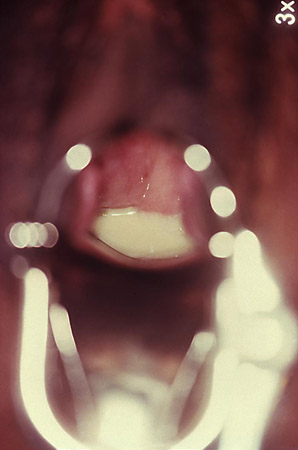Last reviewed: 9 Mar 2025
Last updated: 21 Mar 2025
Summary
Definition
History and exam
Key diagnostic factors
- presence of risk factors
- vaginal discharge
- dysuria
- discharge adherent to vaginal mucosa
Other diagnostic factors
- prior episodes
- pruritus
- vulvodynia
- vaginal dryness
- dyspareunia
- erythema
- pale epithelium
- shiny epithelium
- decreased elasticity
- friable epithelium
- fever
- vaginal bleeding
- abdominal pain
- strawberry cervix
Risk factors
- douching
- poor or excessive hygiene
- antibiotic use
- change in feminine hygiene products and/or soap
- HIV infection
- diabetes
- black women
- intrauterine device
- oral contraceptive pill use
- latex condom/diaphragm
- reproductive age
- menopause
- multiple or new sex partners
- tobacco
- increased frequency of intercourse
- pregnancy
Diagnostic investigations
1st investigations to order
- vaginal pH
- amine 'whiff' test of vaginal secretions
- wet mount microscopy of vaginal secretions
- Gram stain of vaginal secretions
- HIV test
- nucleic acid amplification test (NAAT)
- venereal disease research laboratory (VDRL) test
- serum rapid plasma reagin (RPR) test
Investigations to consider
- culture of vaginal secretions
- polymerase chain reaction (PCR) for trichomoniasis on vaginal secretions
- rapid enzyme tests of vaginal secretions
Treatment algorithm
Contributors
Authors
Diego Illanes, MD, FACOG, FACS

Medical Director
Urogynecology
Milford Regional
Milford
MA
Disclosures
DSI is an advisor for Coloplast, Medtronic and Vicarious.
Peer reviewers
David Chelmow, MD
Chair
Department of Obstetrics and Gynecology
Virginia Commonwealth University
Richmond
VA
Disclosures
DC declares that he has no competing interests.
Jonathon Solnik, MD
Director
Minimally Invasive Gynecologic Surgery
Cedars-Sinai Medical Center
Los Angeles
CA
Disclosures
JS declares that he has no competing interests.
Use of this content is subject to our disclaimer
